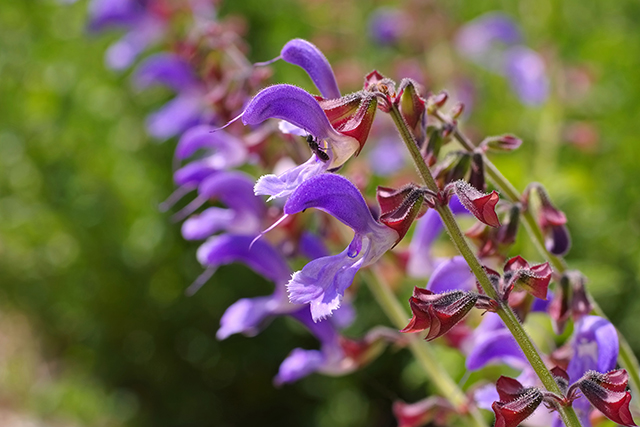Red sage protects against severe cerebrovascular disease
03/07/2019 / By Michelle Simmons

A study published in The American Journal of Chinese Medicine reveals that a certain compound in red sage (Salvia miltiorrhiza) could potentially be used as a promising treatment for managing subarachnoid hemorrhage, a severe cerebrovascular disease. The study looked at the neuroprotective effects of a compound called magnesium lithospermate B (MLB) in red sage.
- Red sage, also known as Chinese sage, is a traditional Chinese medicinal herb that has been widely used for the treatment of cardiovascular diseases.
- Earlier studies have shown that MLB, a bioactive ingredient extracted from red sage, has neuroprotective effects on the central nervous system.
- For the study, researchers from Zhejiang University in China looked at the neuroprotective effects of MLB on brain injury caused by subarachnoid hemorrhage and explored the potential mechanism.
- To do this, they administered either 25 milligrams per kilogram (mg/kg) or 50 mg/kg of MLB to rats 30 minutes after inducing subarachnoid hemorrhage.
- The results showed that MLB significantly decreased brain edema and neurological deficits after inducing subarachnoid hemorrhage.
- In addition, it dose-dependently suppressed the activation of microglia and decreased neuronal apoptosis.
- MLB also reduced inflammatory markers, preventing inflammation.
In conclusion, these findings suggest that MLB exhibited its powerful neuroprotective effects against subarachnoid hemorrhage by suppressing nerve inflammation and cell death
To read more studies on natural medicines like red sage for brain damage, visit Brain.news.
Journal Reference:
Peng Y, He P, Fan L, Xu H, Li J, Chen T, Ruan W, Dou Z, Chen G. NEUROPROTECTIVE EFFECTS OF MAGNESIUM LITHOSPERMATE B AGAINST SUBARACHNOID HEMORRHAGE IN RATS. The American Journal of Chinese Medicine. 2018; 46(6): 1225-1241. DOI: 10.1142/S0192415X18500647
Tagged Under: alternative medicine, brain damage, Brain Injury, cerebrovascular disease, Chinese medicine, Chinese sage, danshen, herbal medicine, Herbs, inflammation, natural remedies, red sage, stroke




















